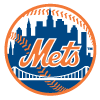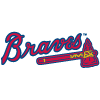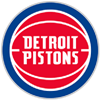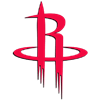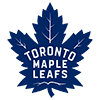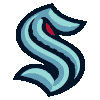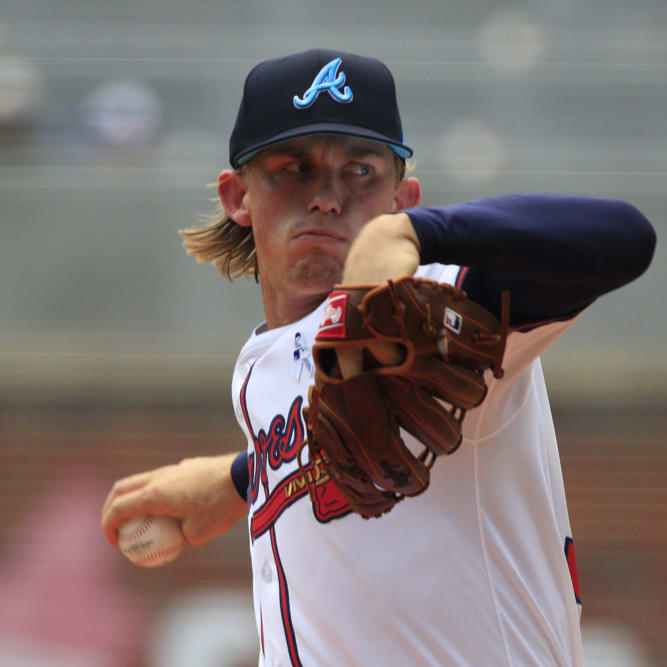Earlier in the season, we used wOBA and xwOBA to make some waiver recommendations, and this week we'll return to that concept to identify to some buy-low and sell-high options. As a brief refresher, wOBA is useful because it assigns the proper run value of each type of hit, similarly to ISO (wOBA also rewards singles and walks, making it more useful for points formats).
The method used was straightforward, as I sorted players by xwOBA-wOBA to identify players both over and underperforming their expected results through two months of the season. As useful as those numbers are, they don't tell the full story, so we'll deep dive a few players in each category laying out in further detail why we should expect their production to rise or fall as the season wears on.
I've also included a couple of tables that illustrate a fuller list of fantasy-relevant players that can be projected to have their performance change as measured by xwOBA.
Buy Low
| 1 | Player | wOBA | xwOBA | Difference |
| 2 | Jesus Sanchez | .260 | .358 | -.098 |
| 3 | Brandon Drury | .216 | .299 | -.083 |
| 4 | Colt Keith | .236 | .311 | -.075 |
| 5 | Corey Seager | .311 | .380 | -.069 |
| 6 | Jake Burger | .215 | .285 | -.070 |
| 7 | Christopher Morel | .313 | .384 | -.071 |
| 8 | Andrew Benintendi | .219 | .291 | -.072 |
| 9 | Brandon Nimmo | .348 | .4210 | -.072 |
| 10 | Francisco Lindor | .276 | .338 | -.062 |
| 11 | Lars Nootbaar | .325 | .382 | -.057 |
Keith didn't have the buzz of an elite prospect, but he did receive a decent amount of attention
Earlier in the season, we used wOBA and xwOBA to make some waiver recommendations, and this week we'll return to that concept to identify to some buy-low and sell-high options. As a brief refresher, wOBA is useful because it assigns the proper run value of each type of hit, similarly to ISO (wOBA also rewards singles and walks, making it more useful for points formats).
The method used was straightforward, as I sorted players by xwOBA-wOBA to identify players both over and underperforming their expected results through two months of the season. As useful as those numbers are, they don't tell the full story, so we'll deep dive a few players in each category laying out in further detail why we should expect their production to rise or fall as the season wears on.
I've also included a couple of tables that illustrate a fuller list of fantasy-relevant players that can be projected to have their performance change as measured by xwOBA.
Buy Low
| 1 | Player | wOBA | xwOBA | Difference |
| 2 | Jesus Sanchez | .260 | .358 | -.098 |
| 3 | Brandon Drury | .216 | .299 | -.083 |
| 4 | Colt Keith | .236 | .311 | -.075 |
| 5 | Corey Seager | .311 | .380 | -.069 |
| 6 | Jake Burger | .215 | .285 | -.070 |
| 7 | Christopher Morel | .313 | .384 | -.071 |
| 8 | Andrew Benintendi | .219 | .291 | -.072 |
| 9 | Brandon Nimmo | .348 | .4210 | -.072 |
| 10 | Francisco Lindor | .276 | .338 | -.062 |
| 11 | Lars Nootbaar | .325 | .382 | -.057 |
Keith didn't have the buzz of an elite prospect, but he did receive a decent amount of attention this offseason after signing an extension to wipe out his arbitration seasons with the Tigers. He got off to a disastrous start in April but has had an equally positive showing in May (.391 wOBA). He still has just a .552 OPS and is averaging only 1.6 fantasy points per game (CBS scoring), so his manager isn't likely to be overly thrilled by his performance.
Keith has some deficiencies in his profile, but overall, it's well suited for points formats. He struck out at a high-teens or low-20s rate during his time in the upper minors and has maintained that in his stint in the majors. The problem has been a total lack of power, but there's no obvious reason he shouldn't be able start seeing results in that regard. He has a league-average 7.1 percent barrel rate with reasonable flyball and pull rates. That's all reflected in an xSLG of .406 (as opposed to an actually SLG of .267), in addition to the difference between his wOBA and xwOBA.
Nootbaar's skills profile is tailor made for points leagues, which makes it a near certainty he's rostered in leagues. It will also make it more difficult to pry him away from his current manager, but he's wroth trying to acquire. His strong plate discipline and decent power profile are nothing new, however, despite hitting just .211, he's averaging 2.6 fantasy points per game. He has just a .231 BABIP relative to a .275 mark for his career, and his xBA is .275. Once hits start falling in at a more expected clip, he should be able to average at least 3.0 fantasy points per game given the rest of his profile.
Lindor has a longer and more accomplished resume than the first two players we've covered, which will make him the hardest to acquire. His skills profile is nearly identical to his recent seasons, in particular 2022, when he averaged 3.2 fantasy points per game. Like Nootbaar, he has a subpar BABIP (.201) and his expected stats all suggest he'll return to a form resembling his past results. His production has lagged enough that it should be possible to get at least a slight discount when acquiring him, and you'll be setting yourself up to roster him for his most productive portions of the season.
Honorable Mentions: Brandon Drury  , Jake Burger
, Jake Burger
Both Drury and Burger have battled injury early in the season and they've both struggled to make quality contact. Given their track records as viable power bats, it wouldn't be surprising to see each of these players excel during the summer months. Each will likely require some additional patience to pay off.
Sell High
| 1 | Player | wOBA | xwOBA | Difference |
| 2 | Isaac Paredes | .392 | .316 | .076 |
| 3 | Connor Joe | .361 | .303 | .058 |
| 4 | Ezequiel Tovar | .327 | .272 | .055 |
| 5 | Elias Diaz | .335 | .281 | .053 |
| 6 | Trea Turner | .377 | .329 | .048 |
| 7 | Brice Turang | .354 | .308 | .046 |
| 8 | Daulton Varsho | .326 | .281 | .045 |
| 9 | Steven Kwan | .397 | .355 | .042 |
| 10 | Jose Altuve | .375 | .333 | .042 |
Much of this exercise has been centered around individual player analysis, and there are some concerning signs in Albies' profile. That includes an inflated infield flyball rate and a complete evaporation of power. More than that though, this recommendation is based on Atlanta's team context. After leading the league with 947 runs scored in 2023, they are currently a middle of the road offense as measured solely by runs scored. That dip will affect all Atlanta hitters, but Albies is likely to feel it the most due to relative lack of standout individual skill as compared to other star members of the lineup like Ronald Acuna and Matt Olson. So far in 2024, Albies has only three home runs and two stolen bases across 37 games.
While Albies doesn't look like a good bet to return to his mark of 3.6 fantasy points per game, this is a good time to reiterate that sell high is the key term – this isn't a suggestion to dump him off your roster for the first trade offer you receive. Atlanta still has a deserved reputation as a strong lineup and Albies has plenty name value in fantasy circles, so anyone trading Albies should still be able to acquire a quality replacement at the position and upgrade elsewhere on your roster.
Turang is a newcomer to fantasy relevance, but he currently ranks 10th among all second baseman in both total fantasy points and fantasy points per game. Simply looking at his points distribution illustrates that he's already slowed down from his impressive start to the season. Through the first four full weeks of the campaign, he scored at least 17 fantasy points three times. In the last four full weeks, he's done so just once.
That distribution alone isn't predictive of how Turang will perform in the future, but his expected stats and skills both suggest that what we've seen across the last four weeks is more of a realistic expectation. The positive to his profile is that he makes a lot of contact and steals a lot of bases. He was also recently shifted to the leadoff role in Milwaukee against right-handed pitching. The problem is that he makes such limited hard contact (career 2.7 percent barrel rate) that it's difficult to envision him maintaining his current level of production. Put another way, Turang is one of 10 second basemen to average at least 3.0 fantasy points per game and he has averaged the fewest total bases per at-bat of the group. It's possible that his ability to steal bases will keep him among that elite group, but I'd be willing to bet against it.







